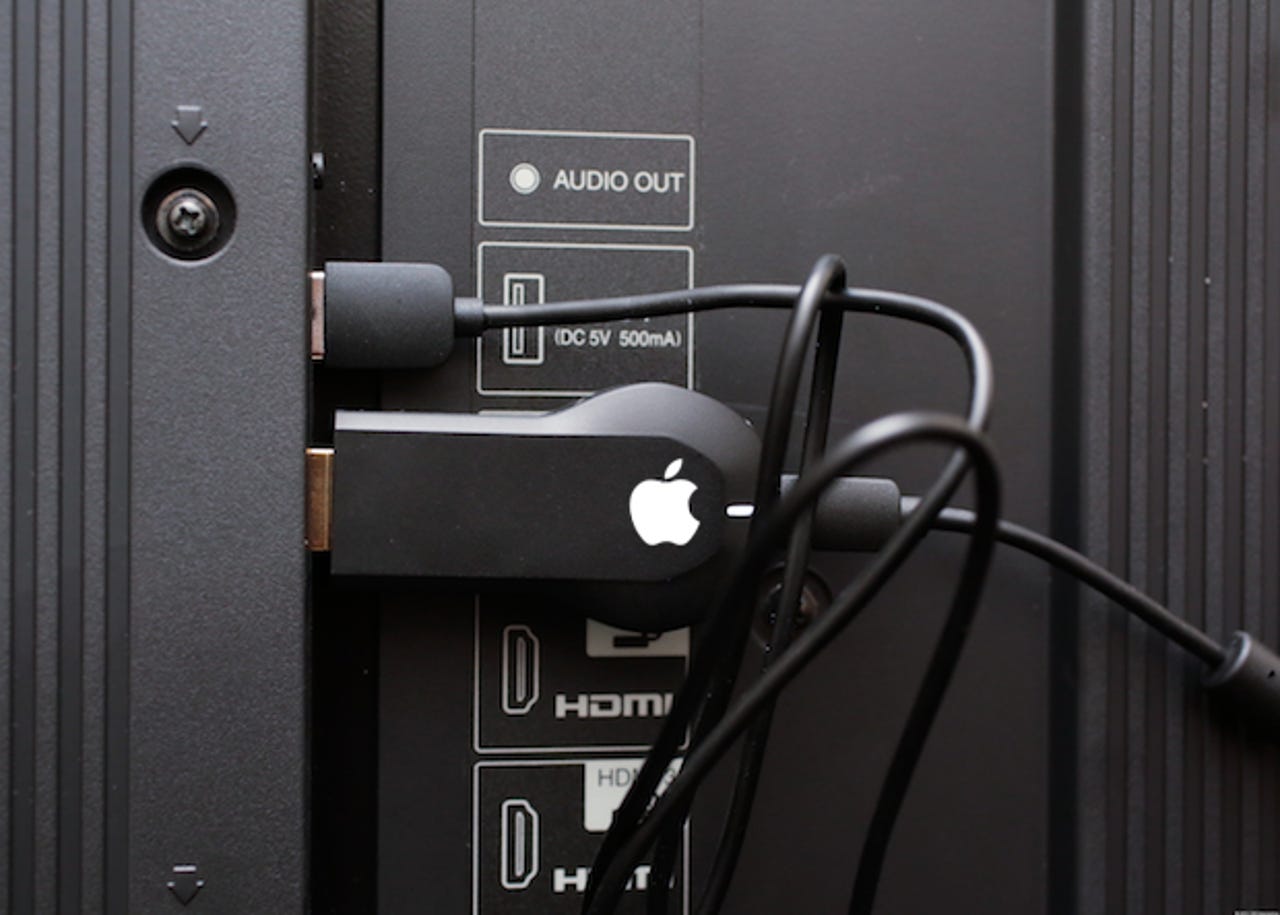'iAnywhere' thumb drive devices: Google did it, Microsoft did it, and so did Dell. Why not Apple?

Plug in a thumb drive and attach a keyboard, and you're all but up and running. In some cases, the first part is enough alone.
Google has the Chromecast wireless media streaming device that plugs into your living room television set through a HDMI port. And one of the little know features to Microsoft's Windows 8's operating system is "Windows To Go," a way to put your entire computer on a USB stick that you can take anywhere you go.
Featured
And not to be outdone, Dell became the latest to drum up a thumb drive computer — although it's not strictly a USB device in that it plugs into a HDMI port. And while Ubuntu founder Mark Shuttleworth came close to this very idea, the funding campaign dried up.
You're starting to picture the scene. It's not necessarily about what your desktop or tablet can do anymore. It's about what that obnoxious, space-taking device in the corner of your home living room or work conference room can do when you plug in a mystical stick of wonder.
The only major player yet to embrace this new wave of thumb drive devices is Apple.
But J.P. Morgan analyst Mark Moskowitz thinks it may not be long until it takes the idea for its own.
In an investors note released Wednesday, Moskowitz said a weaker smartphone market could be jumpstarted by effectively joining its iPhones and iPads to "dock into a specially configured display to run as a computer."
Describing it as a "leapfrog event," he said it would "jumpstart... iPhone and iPad growth as well as peripherals and cloud-based software and services sales."
A few things to consider:
Apple said it doesn't want to converge iOS and OS X
The "iOS-ification" of its OS X desktop and laptop operating system continues, with a bevy of new iPhone and iPad-focused features slowly making their way to the big screen. But it's not the direction many thought it was going.
In an interview with Macworld to celebrate the Mac's 30th birthday, Apple's software chief Craig Federighi and marketing chief Phil Schiller wasted no time in saying the smartphone, tablet, and desktop platforms shouldn't merge. "What a waste of energy that would be," Schiller said.
Even Apple chief executive Tim Cook said, "You can converge a toaster and a refrigerator, but you know those things are probably not going to be pleasing to the user."
Enabling iPhones to turn a "dumb" display into a computer would not break that promise per se. And while Apple would be the first to come up with a functioning product (even if it wasn't the first to invent the idea), it flows against the grain of Apple's ethos to keep the devices in sync but very much separate.
iPhone is the company's cash cow. Its desktop share is minimal, but still crucial
iPhone makes up 58 percent of Apple's quarterly revenue, based on its fiscal first quarter 2014 earnings. That equates to roughly $32.5 billion in revenue for the December holiday quarter.
Apple still drums up 5 percent of its revenue from its range of Macs and MacBook Pro products. With the profit margins so high, it's a non-starter for Apple to ditch $6.4 billion for each fiscal three-month period for the sake of a feature that would probably not affect the price of the iPhone or iPad it came with.
Apple would still maintain its core OS X platform for its traditional desktops and notebooks, Moskowitz said. While Apple doesn't break out its desktop Mac versus MacBook products, the general consensus is that its notebooks are more popular by a long shot.
Any such "iAnywhere" product would need to utilize a "dumb" display. That's not such an easy task when you're sat in your local Starbucks hammering out your new screenplay.
Could this in fact be Apple TV's next move?
Forget a television set. It's been said a million times before, building a low-volume yet high-margin television makes no sense for Apple.
Television sets are replaced maybe every five years, which falls far short of Apple's release cycle. While the software could be upgraded regularly, a half-decade product cycle would fall far behind the latest technologies.
Latest rumors suggest Apple could be pitching a smaller device — even smaller than the device you can already fit in your hand — that plugs into your living room display for content streaming and video downloading.
There's no reason why Apple couldn't shrink the device down into a HDMI or USB-based thumb device that streams local music and video content over the airwaves.
If Microsoft can put an operating system on a flash memory stick, and Google can create a streaming device that fits in the palm of your hand, smash the two together and you're onto something interesting.
